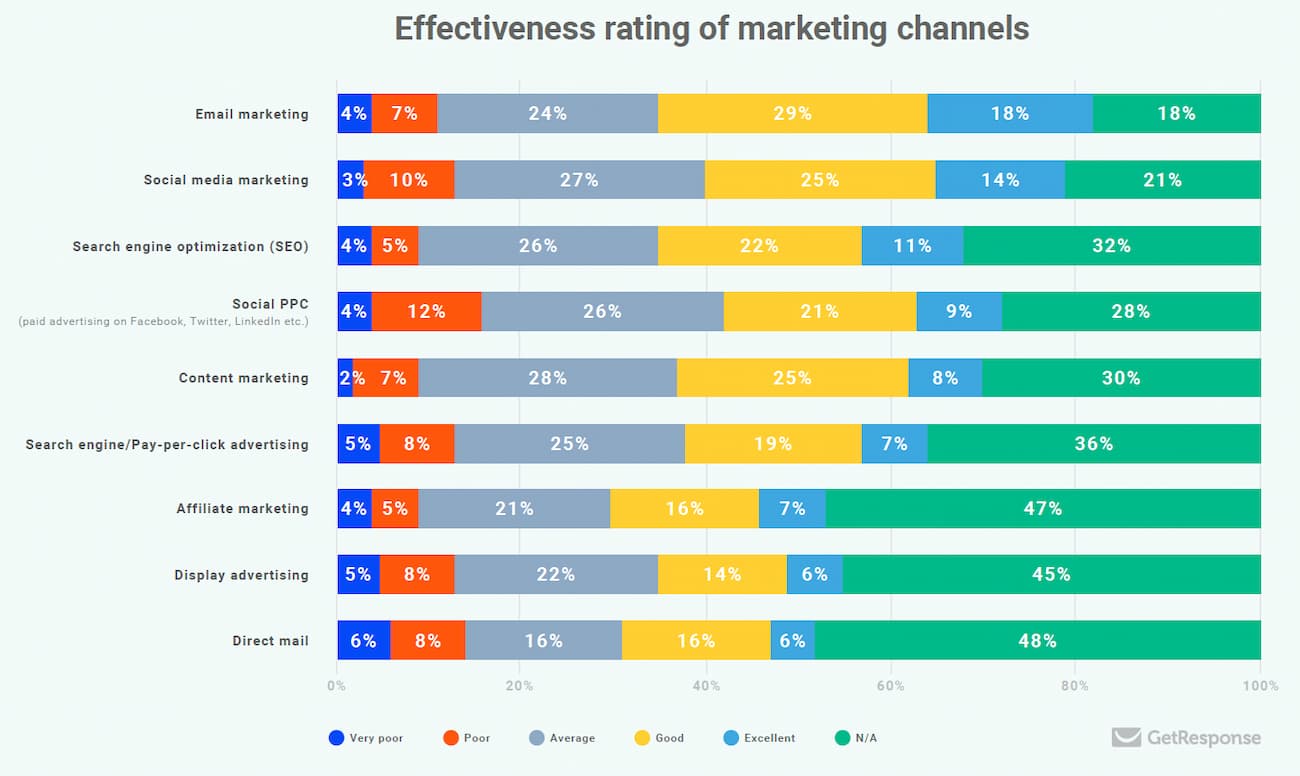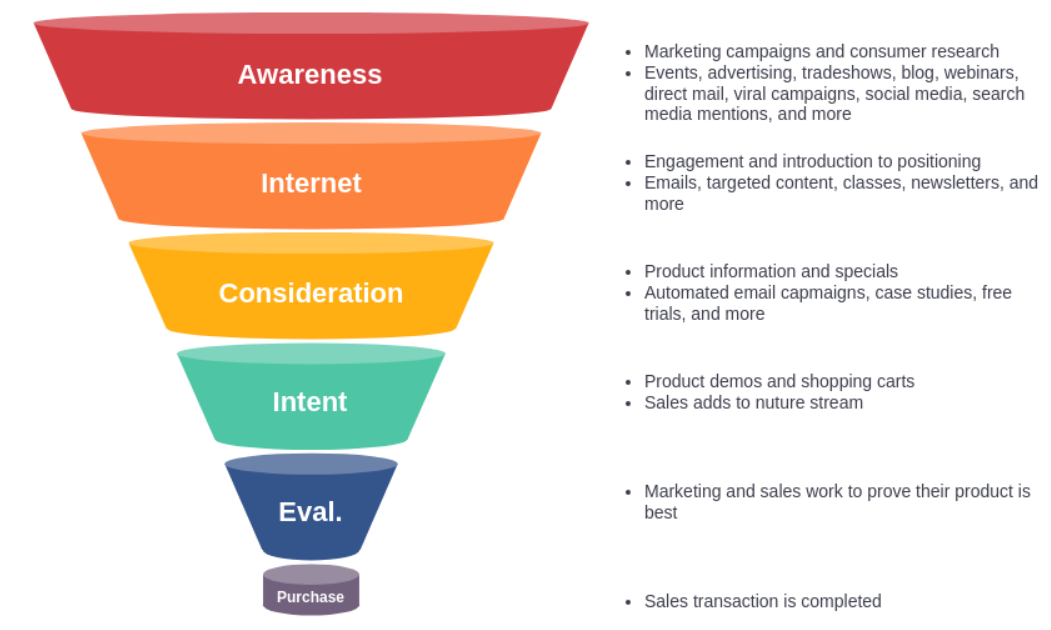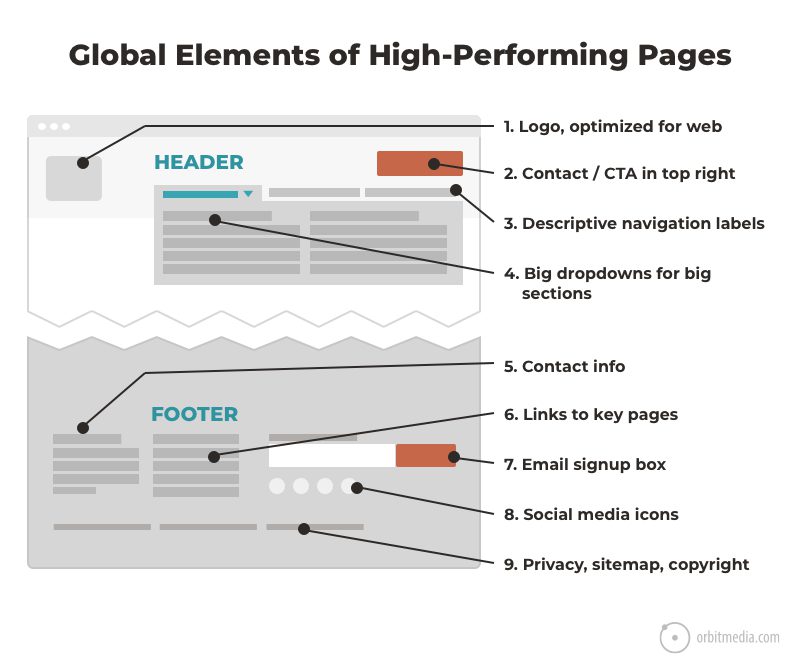How to generate leads: 40 Effective Tips for lead generation
August 14, 2022
How to generate leads may be the most typical web marketing difficulty. While some excel at it, others never seem to grasp it. Everyone appears to have a different theory as to why lead generation doesn’t work.
At least 40 different factors exist! Take a step back and consider everything that goes into building a lead generation system.
Here is our comprehensive, super-sized explanation of everything you need to know about lead generation that you can print out and hang up. Don’t short-cut any steps. You’ll lose opportunities to interact with customers if you overlook something here.
Note for e-commerce sites: this process is very similar for sites that sell things, which are less about generating leads and more about generating customers.

Strategy & Branding
Why are you in business? How you deliver value to your customers? Answering these questions is the first step to generating leads. Branding is the perception of your position in the market, including all your content and imagery. It must be consistent from the first impression through the entire experience of each of your customers.
1. Mission, Vision, and Values
Why are you in business? What is your core service offering? What does your company stand for? Know these first or you’re building your business on sand.
2. Research: Audience Needs, Market Size, Competitive Analysis
Know your niche. How do you meet the demands of your audience? What is your place in the market? Are you up against big, consolidated competitors? Or are you in a fragmented market? Content strategy is about what bait to use, but audience strategy is what pond to fish in.
3. Position
Now you can get specific about your target audience and their unmet needs. What is your unique point of difference? Use a positioning process as a guide.
4. Messaging
How do you best describe the value you provide? What evidence do you have to support your unique point of difference? Align your message with your position and your values. Find a clear and concise voice.
5. Visual Standards
Create a visual continuity through colors, styles, and type. Carry this through your website, your offline materials, your social networks, your email marketing and each piece of your content.
Web Design
The website is both the platform for publishing and the machine for generating leads. A great lead generation website will pull in traffic like a magnet. It needs to build trust, give valuable information to visitors and be easy to update.
6. Requirements Gathering
Step one in a great site is knowing what the scope will be. What features need to be included? What kinds of changes may be needed down the road? How many types of page templates will there be?
7. Keyword Research
People are looking for you right now. If we find out what they’re searching for, we can align pages on the website with phrases for which they’re searching. Research keywords before making the sitemap.
8. Sitemap
The organization of the pages determines how the site will be navigated by visitors. What information do visitors need in what order before they become a lead? The sitemap also affects how search-friendly the pages are. What page labels best indicate your relevance? Ideally, you make a sitemap with both visitors and search engines in mind.
9. Wireframes
The wireframes are the black-and-white layouts for the page templates. Like the sitemap, wireframes have several purposes. They are a planning tool for the user experience. But these layouts also affect search-friendliness and ease-of-updates. This is also where responsive web design is planned. One is created for each type of page.
10. Moodboards
If the wireframes are about structure, the moodboards are about style. Here’s where the visual standards are executed online. Colors, background treatments, button styles, and type treatments are set for headers, links, and body text.
11. Design
Next, the wireframes and moodboards are combined into the storyboard designs. Now all the planning comes to life. The visual prominence of the elements are balanced against each other, as usability and the brand come together.
12. Development
Final designs are converted into web pages first through front-end programming: HTML and CSS. Next comes back-end programming: custom features, integration, the content management system and database development.
13. Browser Testing and Final Review
Everything must be double checked to ensure it works properly on desktop and mobile devices. Pages should load quickly and each feature must be bug-free.
Website Content
Website content development happens during the design process. Once the sitemap is final, the full scope of content requirements are set. Content must be finalized before development is complete or the process will be delayed.
14. Strategy
What questions does your audience have? What concerns? What do they desire, fear, trust, and love? The website content must be aligned with the people who will be reading it. Create personas if necessary. Align the topics and tone with the audience.
15. Write
Write with these readers in mind. Respect the time of the readers, and be concise. Think ahead about traffic, and use the target phrases. Pay close attention to formatting and internal linking. Select images and create videos that build credibility. Put your best foot forward, but be humble.
16. Edit
Make sure the content is accurate and on-target, but don’t delay the launch while you wordsmith that paragraph for two weeks. Web content is easy, free, and fast to change at any time.
17. Content Entry
All final content is added to the content management system, including images, videos, meta data, and page titles. All formatting, including headers, bullets, and links, are checked one last time.
18. LAUNCH!
The big day. For most businesses, it comes just once every four to five years. Hopefully, the design, programming, and content are ready to go. But again, don’t let small issues delay the launch. Digital ink is never dry. You can (and should) change the site as times goes by.
Now the platform is in place, and we’re ready to start content marketing.
Create Content
A website without a steady stream of useful content is just an online brochure. It has no pulse. It is simply an online advertisement. But add useful content, and suddenly, the brand is helpful to the visitor. There’s a reason to share, to link, and to open the newsletters. Content generates the trust that generates the leads.
19. Content Marketing Strategy
A sustainable content marketing plan is based on the resources available: people, money, and time, both internally and from vendors and partners. An effective content marketing plan is based on topics, tone, and frequency that aligns with the needs of the audience. Personas and publishing calendars will help.
20. Research
A carefully researched article is more useful to your audience than an opinion piece. Thorough “how to” posts are more likely to be searched for, shared, bookmarked, and read. Do your research, and create something valuable. Surveys and original research with evidence are among the highest value content on the web.
21. Create
Write the posts, record the podcasts, or shoot the videos, whichever format is best for your audience. Use a ghostwriter, content template, content checklist, or a restaurant napkin, whichever method is best for you and your team.
22. Curate
Repurpose content from other sources, but add your own insights and perspective. Interviews, event recaps, and article round-ups are all efficient ways to produce high-value content quickly.
23. Edit
Your process should include an editorial review to make sure you don’t publish typos and mistakes. Simple errors can hurt credibility and make you look foolish. Take the time to have an editor review the work.
24. PUBLISH!
Make it live. For posts, publish using a URL that includes the target keyphrase. For videos, embed them into your site using a professional hosting service.
Further reading: How to create a marketing funnel that generates sales (with templates).
Content Promotion
Now we’re ready to promote our content. It’s not enough to just publish. Our focus here is content marketing, not advertising.
That means making your content visible through search engine optimization, social media, and email marketing. It’s time to market your marketing…
Search Engine Optimization
Ranking in search engines can provide a durable, consistent source of traffic. It requires research, careful writing, and having a credible website and domain. This means enough link popularity to compete for the phrases you’re targeting.
25. Keyword Research
As with web page content, blog posts and other content marketing should be aligned with keyphrases. As before, select keyphrases based on search volume, competition, and relevance. You’ll use these keyphrases in your writing using SEO best practices.
26. Guest Blogging
Writing high-quality content and submitting it to relevant blogs is a consistent way to earn inbound links. It’s also a way to put your message in front of a new audience and make new friends.
27. Search-savvy PR
Public relations activity can also create great linking opportunities. PR professionals who know the value of links take advantage of any media attention to seek authoritative links to specific web pages and blog posts.
28. Other Marketing Activity
Of course, this goes beyond search optimization, but it’s worth noting that all kinds of offline marketing have potential search benefits. Events, partnerships, advertising, association memberships, and sponsorships can all create link opportunities.
Social Media
Social media marketing is a powerful channel for promoting content and a tool for online networking. Both of these outcomes are important for lead generation. Great social media includes a content promotion strategy, content curation, and one-to-one conversation.
29. Research
Find specific people to connect with, such as prospects, bloggers, journalists, editors, and influencers. Build lists of people to watch. Carefully research publications and blogs before pitching content.
30. Pitch
For both PR and guest blogging, pitching content goes hand-in-hand with social media. Use social channels to gradually build stronger connections. Submit content with humility and with a sensitivity to the audience of the blog or publication. Always be thoughtful of editors’ time.
31. Social Sharing
Post your content on the social networks where your audience spends time. Use targeted sharing to make it visible to people who will love what you wrote. Don’t be shy. Believe in your content, and share each post multiple times over days, weeks, and months.
32. Conversation
Don’t let your social stream fill up with promotional posts. Talk to people! Use social media as a tool for networking. When possible, move the conversation from casual mentions on Twitter, to email, phone, and face-to-face meetings.
Email Marketing
Search engines and social networks are all owned by companies, but your email list belongs to you and your business. An engaged list of subscribers who look forward to your content is one of the most powerful tools for lead nurturing and lead generation.
33. Design and Production
Your email template should be lightweight, mobile-friendly, and easy to manage. Your subject line should be descriptive but leave room for curiosity. Your teaser text and call-to-action should be crafted to maximize clickthroughs.
34. Timing & Frequency
When is your audience most likely to open? Friday at lunch or Saturday morning? How often should you send email? If your sales cycle is long, you may only need to send something monthly. Focus on quality, not quantity. Nurture leads by politely inviting your current prospects to join your list.
35. Testing
Email marketing is easy to track, so each email is an opportunity for measurement and improvement. A/B test subject lines and timing. Track using the Google URL builder to compare campaigns. Keep experimenting and improving.
36. SEND!
Send emails using a professional service with good deliverability (99%) and easy-to-read reports. Keep your list clean by checking bounces and removing old addresses.
Read: 13 ways to increase engagement in your email marketing.
Analytics
Analytics is a decision support tool. Use it to do real analysis, blog optimization, and check the results of experiments. The two most important numbers for lead generation are total traffic and the conversion rate. All efforts are focused on these two numbers.
37. Visitors and Overall Traffic Levels
Adjusting for seasonality, is traffic up or down? Is your content attracting more visitors over time? Are the visitors bouncing after one page or going deeper into your website?
38. Traffic Sources
Where are visitors coming from? Which of your promotion channels are effective? Which keyphrases, email campaigns, and social channels are pulling in visitors?
39. Content Performance
Which pages are connecting with visitors? Which topics are getting traction? Which are most successful at generating traffic and conversions?
40. Conversions
The bottom line number is total leads generated. The total traffic times your conversion rate equals leads. Other conversions include newsletter subscribers, online sales and job applicants.
Is that all?
So that’s how to generate leads. Yes, there are a lot of steps involved. But it’s worth it. A steady flow of high-quality leads can transform a business. Generate enough demand, and you’ll have no choice but to grow your business.
Article by Andy Crestodina of Orbit Media


